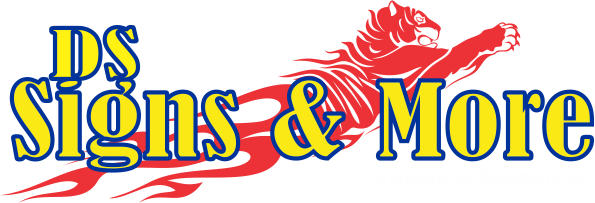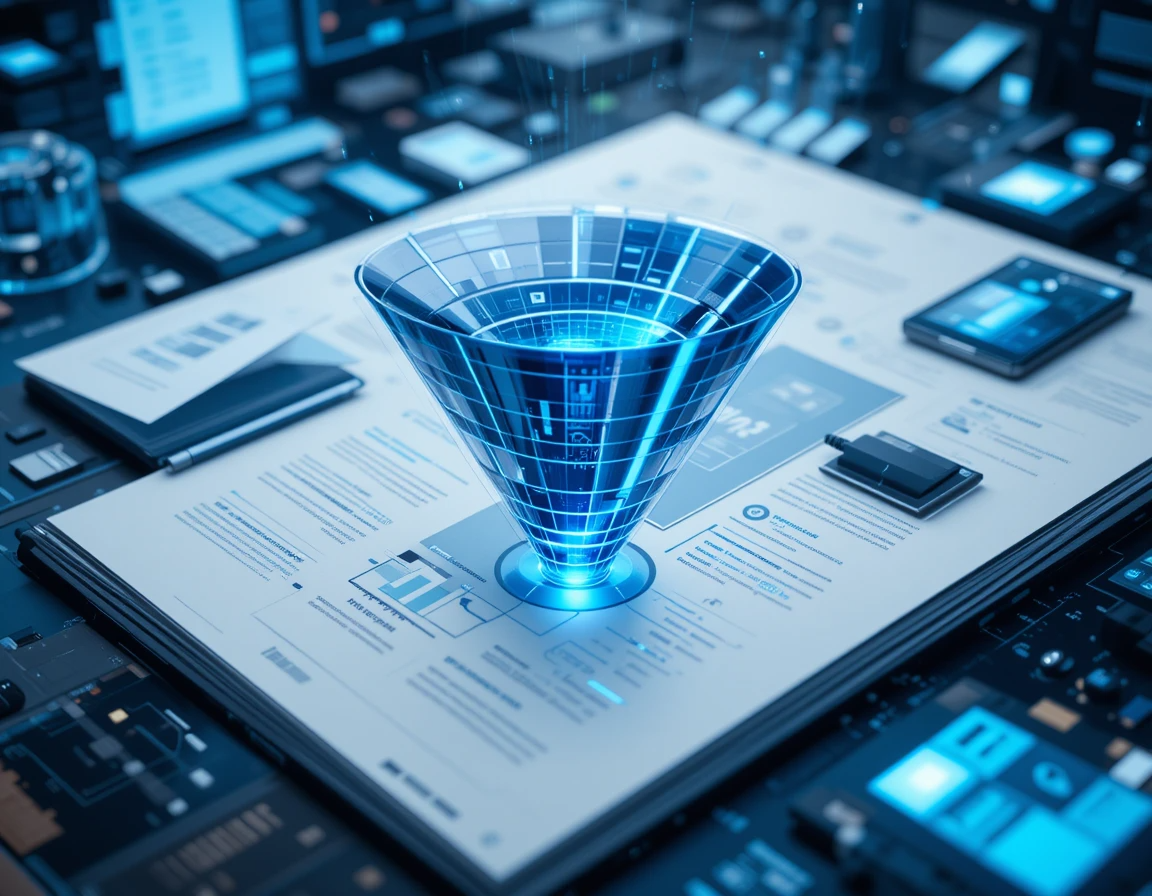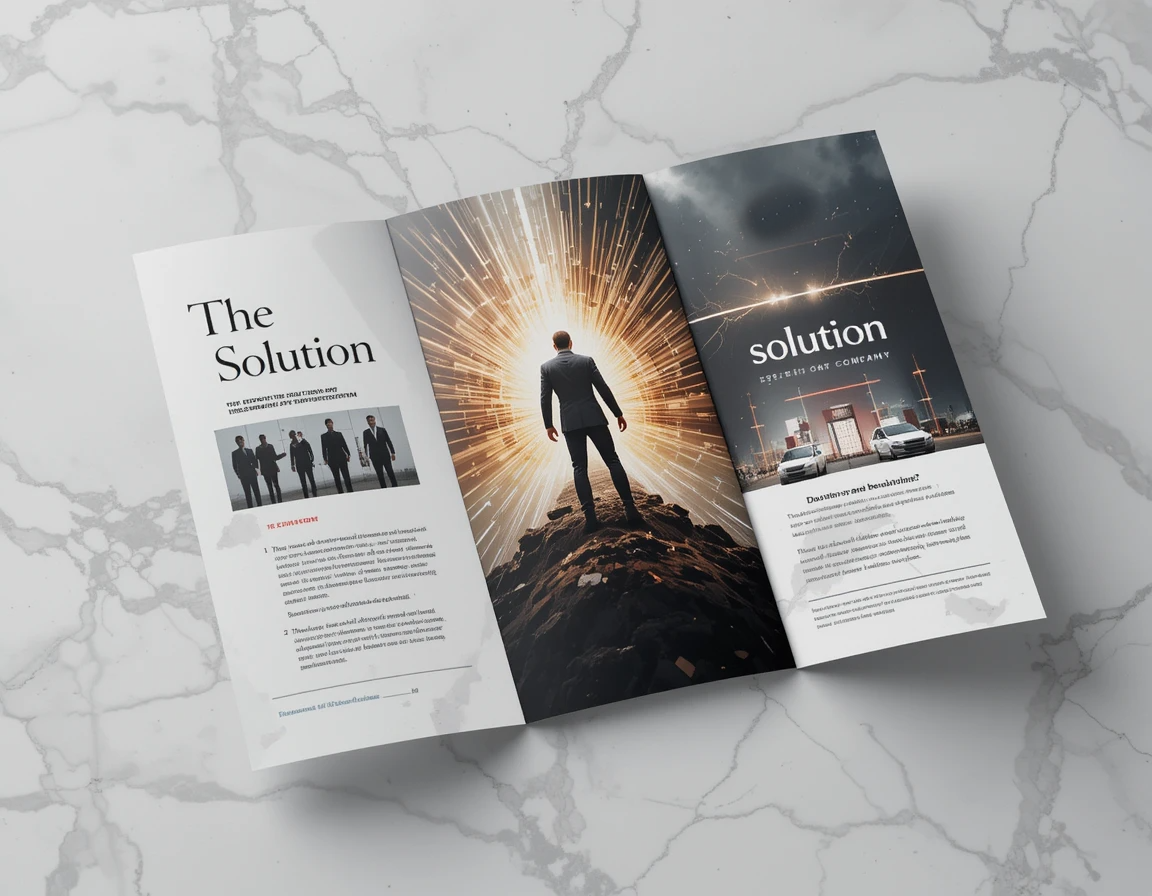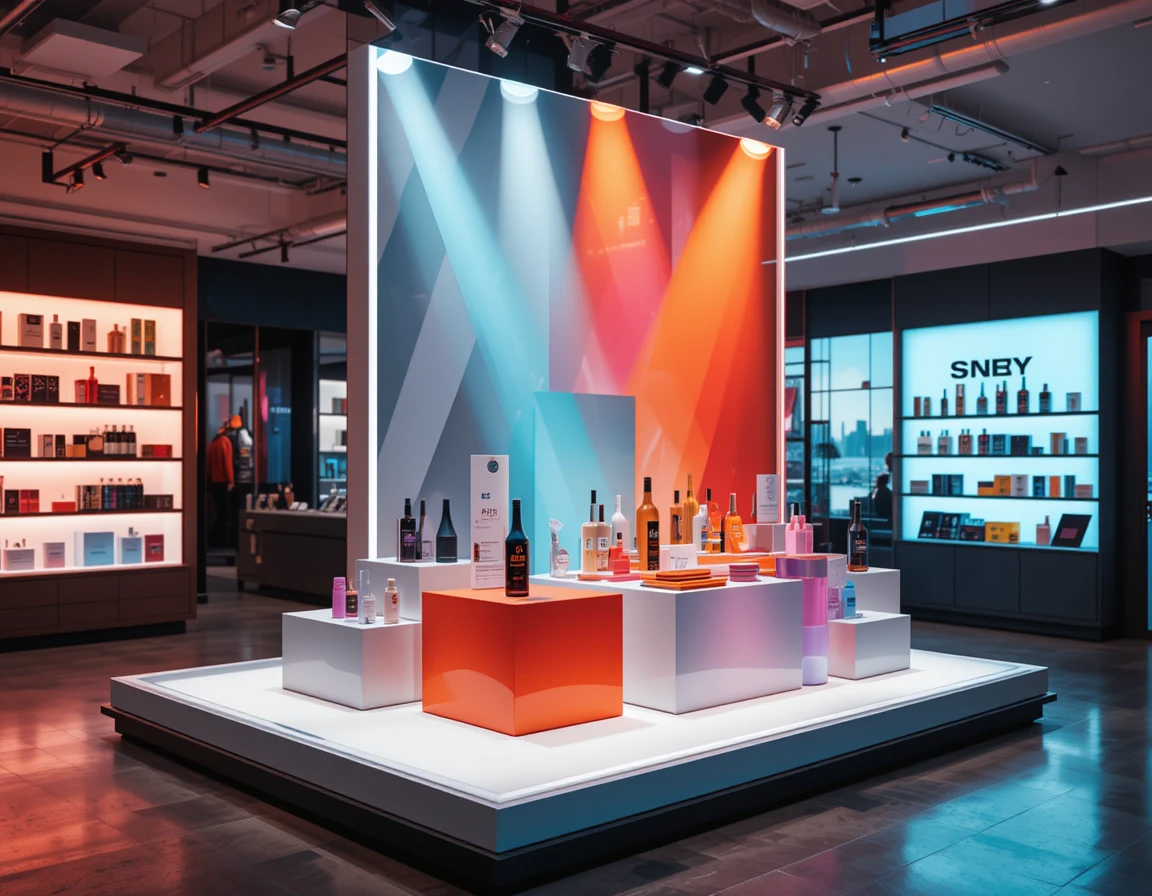Print Materials That Support Your Digital Marketing Funnel
In a world where marketing conversations revolve around algorithms, pixels, and click-through rates, something unexpected is happening: print materials are making a powerful comeback.
But not just any print materials.
The most successful businesses today aren’t choosing between print and digital—they’re strategically integrating physical touchpoints that amplify their digital marketing funnels.
You’ve likely invested thousands in optimizing your digital customer journey. Yet for many businesses, a critical disconnect remains between their sophisticated online strategies and their physical marketing materials—creating friction exactly where you need momentum.
What if your print materials could be deliberately designed to move prospects through your digital funnel instead of existing in a separate marketing universe?
That’s exactly what this guide will show you how to create.
By the time you finish reading, you’ll have a clear framework for developing print materials that seamlessly support each stage of your digital marketing funnel—generating more leads, nurturing prospects more effectively, and ultimately converting more customers than either channel could accomplish alone.
Let’s bridge the gap between your physical and digital marketing worlds.
The New Role of Print in a Digital-First World
Before diving into specific strategies, let’s establish why print deserves a place in your digital marketing ecosystem.
Why Print Still Matters in the Customer Journey
The statistics tell a compelling story:
- 82% of consumers trust print advertising more than digital advertising (MarketingSherpa)
- Direct mail response rates average 9% for house lists compared to 1% for email (ANA/DMA)
- 56% of customers find print marketing to be the most trustworthy form of marketing (Epsilon)
- 70% of consumers are more likely to remember a brand they see in print compared to online (TrueImpact)
But the most successful businesses aren’t simply using print as a separate channel—they’re using it as a strategic amplifier for their digital efforts.
As marketing strategist David Ogilvy once said, “What works in marketing is not necessarily what’s new, but what’s effective.” Today, that means leveraging the unique strengths of print to overcome digital limitations.
The Psychological Impact of Physical vs. Digital Touchpoints
Neuroscience research offers fascinating insights into why print creates different cognitive and emotional responses:
- Tactile engagement: Physical materials engage more senses, creating stronger memory encoding
- Spatial memory: Our brains associate physical objects with spatial memory, which is particularly durable
- Cognitive processing: Print materials require 21% less cognitive effort to process than digital content (Canada Post)
- Perceived value: Physical items are subconsciously assigned higher value than identical digital content
These psychological factors translate directly into marketing results.
Dr. Megan Peterson, neuroscience researcher, explains: “When we hold something physical, our brains process it as more real and valuable. This activation of multiple sensory channels creates stronger memory pathways than digital-only experiences.”
Case Study: How Riverside Financial Increased Conversion Rates by 34% Through Strategic Print Integration
Riverside Financial, a mid-sized wealth management firm, struggled with digital-only lead nurturing. Despite sophisticated email sequences, their prospect-to-client conversion hovered around 8%.
Their solution? A strategically timed print component integrated into their digital funnel.
Here’s what they implemented:
- Personalized welcome packet sent after initial digital inquiry
- Custom financial assessment booklet delivered at the consideration stage
- Premium decision-making guide for prospects nearing commitment
The results were remarkable:
- Overall conversion rate increased from 8% to 12.8%
- Average time-to-decision decreased by 42 days
- Client acquisition cost reduced by 17%
“Our digital funnel was efficient but impersonal,” explains Riverside’s marketing director. “The strategic print touchpoints created emotional connections that digital alone couldn’t accomplish. The key was making these print materials direct extensions of our digital experience, not separate marketing initiatives.”
Mapping Print Materials to Your Digital Funnel Stages
Now let’s explore how specific print materials can support each stage of your digital marketing funnel.
Top-of-Funnel Print Strategies
At the awareness stage, your goal is to introduce prospects to your brand and initiate their digital journey.
Awareness-Building Print Materials
Effective top-of-funnel print materials share these characteristics:
- Visual impact that creates immediate brand recognition
- Minimal but intriguing information that prompts curiosity
- Clear pathways to digital discovery
- Memorable tactile elements that digital can’t replicate
Consider these proven formats:
- Dimensional mailers that stand out in the mailbox
- Oversized postcards with striking imagery
- Pocket-sized guides that provide immediate value
- Location-based materials (retail displays, event handouts)
One software company found that sending unusual “mystery box” direct mail pieces to cold prospects resulted in a 38% increase in website visits and a 12% boost in demo requests compared to email-only outreach.
Connecting Physical Encounters to Digital Discovery
The critical factor in top-of-funnel print is creating a seamless bridge to digital engagement:
- Simplified URLs: Use memorable, campaign-specific web addresses
- Text-to-access options: Allow prospects to text a keyword to receive a link
- App-based scanning: Incorporate visual triggers that launch digital experiences
- Social media hooks: Create “share-worthy” physical items that encourage digital sharing
Pro tip: “The most effective print-to-digital connections don’t just send people to your homepage,” advises digital integration specialist Tomas Rodriguez. “They deliver prospects to highly specific digital experiences that maintain the context and promise of the print piece.”
Middle-of-Funnel Consideration Tools
As prospects evaluate options, strategically designed print materials can accelerate digital research and nurturing.
Information-Rich Print Materials That Drive Digital Research
Middle-funnel print materials should:
- Provide substantive value that complements digital content
- Address key consideration factors with depth digital rarely achieves
- Establish authority in a format that signals credibility
- Include multiple pathways back to digital engagement points
Effective formats include:
- Comprehensive guides that expand on digital content
- Comparison tools that simplify decision-making
- Case study collections that build confidence
- Product samples that create tangible experiences
One home services company created a “Planning Guide” that expanded on their digital content. When they tracked behavior, they found that prospects who received the guide spent 27% more time on their website and viewed 3.2x more pages than those who only received digital nurturing.
The Bridge Between Physical Evaluation and Online Decisions
The key to middle-funnel print effectiveness is creating deliberate connections back to digital decision points:
- Segment-specific QR codes that track which print content drives the most engagement
- Personalized evaluation tools that continue online
- Digital content access codes that unlock premium content
- Sequential calls-to-action that guide prospects through both print and digital touchpoints
Implementation tip: “Create a clear visual and messaging system that helps prospects understand where they are in your evaluation process,” recommends customer journey expert Alicia Thompson. “When print and digital materials use consistent progress indicators, you reduce cognitive load and increase completion rates.”
Bottom-of-Funnel Conversion Accelerators
As prospects approach decisions, strategic print materials can overcome final objections and create the confidence needed for conversion.
Print Materials That Close Digital Deals
Conversion-focused print should:
- Address specific barriers to commitment
- Create tangible representations of intangible benefits
- Elevate perceived value beyond digital-only offerings
- Provide clear, friction-free pathways to final decisions
Effective formats include:
- Decision validation kits that reinforce digital proposal elements
- Personalized offer packages that feel exclusive and valuable
- Implementation preview materials that reduce uncertainty
- Guarantee or risk-reversal documents that build confidence
A SaaS company found that sending a physical “Implementation Success Kit” to prospects who had received digital proposals increased their close rate by 23% and reduced their sales cycle by 18 days.
Post-Purchase Print Touchpoints That Encourage Digital Engagement
The often-overlooked opportunity is using print to strengthen digital relationships after the initial conversion:
- Welcome kits that introduce digital resources
- Usage guides that enhance product adoption
- Milestone recognition that celebrates customer achievements
- Referral tools that extend digital word-of-mouth
One subscription business increased their second-month retention by 14% by sending new subscribers a physical “Success Roadmap” that guided them through digital onboarding steps.
Essential Print-to-Digital Connectors
The bridge between print and digital experiences is critical to funnel effectiveness. Let’s explore the connectors that make this integration seamless.
Beyond Basic QR Codes: Advanced Techniques
While standard QR codes work, more sophisticated approaches deliver better results:
- Dynamic QR codes: Update destinations without changing the printed code
- Design-integrated codes: Visually incorporate codes into imagery rather than adding them as afterthoughts
- Personalized QR experiences: Codes that deliver customized content based on user data
- Sequential engagement: Series of codes that create interactive journeys
One automotive brand embedded QR codes within their vehicle brochure imagery. When scanned, these codes launched specific AR experiences, resulting in a 41% increase in feature exploration compared to standard links.
Personalized URLs and Landing Pages
Customized digital destinations dramatically improve print-to-digital conversion:
- Individual PURLs (e.g., companynamecom/john-smith) that recognize the visitor
- Campaign-specific landing pages that maintain visual and messaging consistency
- Progressive profiling pages that build on previously collected information
- Print-exclusive digital offers that track response attribution
Implementation tip: “Create a consistent visual language between your print piece and its digital destination,” advises cross-channel designer Maria Chen. “When the transition feels seamless, conversion rates typically improve by 18-24%.”
Tracking Mechanisms for Print Campaign Performance
Effective measurement bridges the attribution gap between print and digital:
- Unique phone numbers or extensions for each print campaign
- Campaign-specific email addresses or contact forms
- Dedicated promotion codes for print-driven conversions
- Specialized landing page paths that identify print origins
One financial services company implemented a unified tracking system across their print and digital funnel touchpoints. This allowed them to determine that prospects who engaged with both channels had a 37% higher lifetime value than digital-only customers.
Augmented Reality Integration for Immersive Experiences
AR creates powerful connections between physical and digital worlds:
- Print materials that transform into interactive experiences
- Product visualizations that bring specifications to life
- Process demonstrations that illustrate complex concepts
- Location-based AR that enhances in-person experiences
A furniture retailer implemented AR-enabled catalogs that allowed customers to visualize products in their homes. This integration increased their conversion rate by 35% and reduced returns by 28%.
Strategic Print Design for Digital Conversion
The design of your print materials significantly impacts their effectiveness in supporting digital conversion. Here’s how to optimize that design.
Visual Consistency Across Physical and Digital Assets
Cognitive fluency—the ease with which our brains process information—dramatically impacts conversion rates:
- Establish consistent visual cues that signal specific actions
- Maintain color psychology principles across channels
- Use identical iconography and symbolic language
- Ensure typography hierarchies remain consistent
“When visual systems are consistent across channels, we see an average 26% reduction in decision friction,” notes UX researcher James Wilson. “This translates directly into higher conversion rates and shorter sales cycles.”
Copy Techniques That Bridge Online and Offline Experiences
Effective messaging creates continuity between print and digital:
- Use consistent voice and terminology across all touchpoints
- Maintain parallel structure in key messages and value propositions
- Create narrative threads that continue from print to digital
- Develop progressive disclosure that respects what prospects already know
One healthcare provider revised their print materials to use identical language to their digital platform. This simple alignment increased their form completion rate by 17%.
Call-to-Action Strategies That Work in Print
Print CTAs require different approaches than digital:
- Use action verbs that translate to physical actions
- Create visual priority through size, color, and positioning
- Provide multiple response options (scan, call, visit, text)
- Consider response friction in different usage contexts
“The most effective print CTAs acknowledge the context in which they’ll be seen,” explains direct response expert Thomas Miller. “A mailer viewed at home needs different response options than a brochure picked up in a store.”
Design Elements That Enhance Digital Follow-Through
Certain design techniques specifically support the print-to-digital transition:
- Visual cues that create anticipation of digital content
- Intentional information gaps that encourage digital exploration
- Preview elements that hint at digital experiences
- Sensory triggers that digital can’t provide (texture, scent, dimensional elements)
A travel company implemented a “sensory preview” in their print brochures, using textured paper and subtle scents that evoked destinations. QR codes then led to immersive digital experiences. This approach increased their digital engagement by 42%.
Print Materials That Outperform Digital-Only Approaches
Certain print formats consistently deliver exceptional results when integrated with digital funnels.
High-Value Direct Mail Sequences
Strategic direct mail sequences can dramatically amplify digital engagement:
- Teaser-reveal sequences: Building anticipation before key digital events
- Problem-solution sequences: Establishing pain points before presenting digital solutions
- Question-answer sequences: Creating curiosity that digital content satisfies
- Status-update sequences: Providing physical milestones in digital journeys
One B2B company implemented a three-step direct mail sequence targeting prospects who had downloaded a whitepaper but not requested a demo. The sequence generated a 34% demo request rate compared to 9% for their email-only approach.
Premium Leave-Behind Materials for Sales Conversations
Physical materials that extend digital sales conversations:
- Decision guides that complement digital proposals
- Value demonstration tools that make abstract benefits tangible
- Implementation roadmaps that reduce perceived complexity
- Testimonial collections that build confidence
A manufacturing company created premium leave-behind folders with personalized digital access cards. These materials increased their proposal-to-contract conversion rate by 28%.
Event-Based Print Strategies That Feed Digital Pipelines
Physical events create unique opportunities for print-digital integration:
- Pre-event materials that set digital expectations
- At-event activation tools that drive digital engagement
- Post-event follow-up that extends digital connections
- Experience documentation that encourages digital sharing
A software company distributed “Digital Experience Passports” at industry events. These physical booklets guided attendees through in-person and digital touchpoints, increasing their qualified lead capture by 47% compared to previous events.
Dimensional Mail Campaigns for High-Value Prospects
For high-value opportunities, dimensional mail consistently outperforms digital-only approaches:
- Attention-grabbing formats that ensure awareness
- Perceived value that reflects prospect importance
- Multi-sensory experiences that create memorable impressions
- Shared experiences that extend reach within organizations
One professional services firm sent dimensional “Strategy Kits” to C-level prospects who had engaged with their digital content. The kits achieved a 68% meeting request rate compared to 12% for their standard digital nurturing.
Implementation Framework: Building Your Integrated Plan
Let’s translate these insights into a practical framework for your business.
Audit: Identifying Gaps in Your Current Print-Digital Integration
Begin by assessing your current state:
- Map your existing digital funnel stages and touchpoints
- Identify current print materials and their intended purposes
- Evaluate connection points between print and digital experiences
- Assess measurement systems for cross-channel attribution
- Review performance data for current print and digital efforts
This audit typically reveals significant gaps in middle-funnel integration and post-conversion print touchpoints.
Budget Allocation: Where Print Delivers Highest ROI in Digital Funnels
Not all funnel stages benefit equally from print investment:
- High-value prospect identification: 15-20% of integrated budget
- Middle-funnel nurturing: 30-40% of integrated budget
- Conversion acceleration: 25-30% of integrated budget
- Post-purchase engagement: 15-20% of integrated budget
“The most common mistake is concentrating print budget at the top of the funnel,” notes marketing ROI specialist Sarah Jenkins. “Our analysis shows that mid-funnel print typically delivers 3-4x higher ROI by significantly increasing conversion rates.”
Calendar Mapping: Syncing Print Deployments with Digital Campaigns
Timing is critical for successful integration:
- Identify key digital campaign moments throughout the year
- Map print production timelines backward from these moments
- Create trigger-based print deployment for evergreen digital campaigns
- Establish response windows that align with digital follow-up sequences
- Develop contingency plans for rapid print adjustments
One retailer created a “digital-print calendar” that aligned their email campaigns with direct mail deployments. This coordination increased their overall campaign performance by 32%.
Measurement: Tracking Print’s Impact on Digital Conversion Metrics
Comprehensive measurement is essential:
- Establish baseline digital conversion metrics before print integration
- Implement print-specific tracking mechanisms (unique URLs, codes, etc.)
- Create segment comparisons between print+digital and digital-only journeys
- Measure both immediate response and long-term impact metrics
- Analyze cost-per-conversion across integrated journeys
“Without proper cross-channel attribution, companies typically undervalue print’s contribution by 40-60%,” warns analytics expert Robert Chen. “This leads to poor resource allocation and missed opportunities.”
Transform Your Marketing Funnel Through Strategic Print Integration
The most successful businesses today aren’t choosing between print and digital—they’re strategically integrating both to create customer journeys that neither channel could deliver alone.
The framework we’ve explored isn’t about adding print as a separate initiative. It’s about identifying strategic moments where physical touchpoints can overcome digital limitations and accelerate your prospects’ journey toward conversion.
Begin by identifying one high-impact opportunity in your current digital funnel—a point where prospects typically stall or engagement drops. Then design a print intervention specifically targeted to overcome that friction point.
Remember: the goal isn’t to create beautiful print materials. The goal is to create effective print materials that measurably improve your digital funnel performance.
What digital marketing challenge could you address with strategic print integration? The answer to that question is where your transformation begins.





